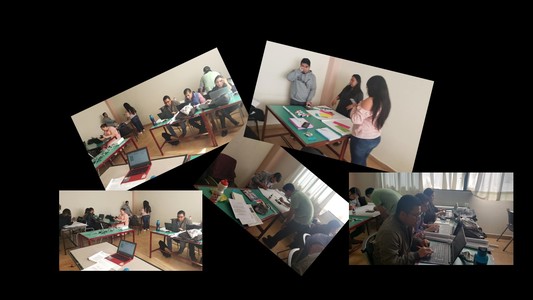
Si buscas
hosting web,
dominios web,
correos empresariales o
crear páginas web gratis,
ingresa a
PaginaMX
Por otro lado, si buscas crear códigos qr online ingresa al Creador de Códigos QR más potente que existe


Tu Sitio Web Gratis
© 2025 INTRODUCCIÓN A LA EDUCACIÓN BASADA EN COMPETENCIAS![]()
![]()
![]()
![]()
![]()
![]()

Kevinidome
23 Feb 2025 - 01:12 am
Scores of unexploded World War II bombs discovered under children’s playground
lucky jet bonus
Scores of unexploded bombs dating from World War II have been recovered from a children’s playground in northern England after a chance discovery.
Local officials in the town of Wooler, Northumberland called in bomb disposal experts after workers involved in a planned overhaul of Scotts Play Park found unexploded ordnance, the parish council said in a statement sent to CNN on Monday.
Two bombs were initially removed by the British Army, the UK Ministry of Defense said in a statement. The parish council was then advised that a full survey of the area was required, according to a council spokesperson.
Bomb disposal company Brimstone Site Investigation then uncovered 65 10-pound practice bombs and smoke cartridges on the first day of works, with a further 90 practice bombs recovered on the second day.
The company told CNN that the bombs date from World War II.
According to the parish council, all of the bombs need to be found and removed before the park can be reopened. It said 174 devices had been found so far.
Nikkienero
23 Feb 2025 - 12:55 am
darkmarket list https://github.com/darkmarkets2025we92r/darkmarkets2025 - darknet markets links
Eugenenaime
23 Feb 2025 - 12:14 am
Lucky Jet – твой шанс на большие выигрыши!
Попробуй захватывающую краш-игру прямо сейчас! Регистрируйся и получи бонус до 500% на первый депозит с промокодом: LuckyJetTeam.
lucky jet сигналы
Об игре
Lucky Jet — это не просто игра, а захватывающее приключение, в котором каждый момент может стать решающим! Эта краш-игра бросает вызов вашим инстинктам и способности быстро принимать решения. В основе игры — динамичная механика, где игроки ставят на рост коэффициента, но задача не в том, чтобы ждать до последнего, а вовремя вывести свой выигрыш, прежде чем персонаж взлетит слишком высоко и случится крах.
Чем выше коэффициент, тем более значительная награда! Но не забывайте: в этом азартном путешествии важен каждый момент, ведь именно ваше решение о выводе решит, насколько велик будет ваш выигрыш. Это не просто игра, а настоящее испытание на скорость и удачу! Простые правила, быстрые раунды и реальные выигрыши – вот почему игроки выбирают Lucky Jet.
Бонусы и промокоды в Lucky Jet
В Lucky Jet вас ждут щедрые бонусы и эксклюзивные промокоды, которые помогут увеличить ваш баланс и продлить удовольствие от игры! Мы ценим активных игроков и регулярно запускаем новые акции, чтобы сделать ваш игровой процесс еще выгоднее.
Актуальные бонусные предложения
Бонус 500% на первый депозит
Используйте промокод LuckyJetTeam при пополнении счета и получите увеличение депозита в 5 раз! Это отличная возможность начать игру с солидным запасом.
Еженедельные акции и фриспины
Чем больше вы играете, тем больше подарков получаете! Участвуйте в регулярных промо-акциях и получайте фриспины, бонусные деньги и дополнительные награды за активность.
Кэшбэк до 10%
Проиграли? Не беда! В Lucky Jet вы можете вернуть часть потерянных средств благодаря системе кэшбэка. Еженедельно вам будет начисляться до 10% возврата от проигранных ставок.
Следите за новыми акциями! Мы постоянно обновляем бонусные предложения, поэтому не упустите возможность воспользоваться самыми выгодными промо. Подписывайтесь на новости и следите за актуальными акциями, чтобы всегда быть в выигрыше!
Используйте бонусы и повышайте свои шансы на победу в Lucky Jet!
Как начать играть в Lucky Jet
Готовы испытать удачу и выиграть по-крупному? Следуйте этим простым шагам:
Зарегистрируйтесь на официальном сайте 1win. Процесс регистрации занимает всего пару минут.
Пополните счет удобным для вас способом: банковской картой, электронными кошельками или даже криптовалютой.
Откройте Lucky Jet в разделе казино и приготовьтесь к динамичному игровому процессу.
Сделайте ставку и следите за ростом коэффициента. Чем выше он поднимается – тем больше ваш потенциальный выигрыш.
Выведите выигрыш до того, как Lucky Jet взлетит! Главное – не жадничать и вовремя остановиться, иначе ставка сгорит.
Используйте стратегии, анализируйте предыдущие раунды и комбинируйте ставки, чтобы увеличить свои шансы на победу!
Lennyanady
22 Feb 2025 - 11:38 pm
darkmarket https://github.com/darkmarketlinkp22jr/darkmarketlink darknet drug market
Michaelraifs
22 Feb 2025 - 11:34 pm
bitcoin dark web https://github.com/nexusdarkneturlwrf4t/nexusdarkneturl - darkmarket list
Billanady
22 Feb 2025 - 11:24 pm
darknet market list https://github.com/darknetmarketlinks2025/darknetmarkets darknet market links
Ozzyanady
22 Feb 2025 - 11:23 pm
dark market onion https://github.com/darknetdruglinksvojns/darknetdruglinks darknet websites
Johnnyanady
22 Feb 2025 - 11:12 pm
darkmarket 2025 https://github.com/darknetwebsitesgflpx/darknetwebsites darknet market list
Rodneynak
22 Feb 2025 - 11:07 pm
dark web link https://github.com/aresmarketlink0ru72/aresmarketlink - dark web link
Davidfaw
22 Feb 2025 - 11:07 pm
darkmarket link https://github.com/darknetmarketlistv8tg0/darknetmarketlist - darknet market links